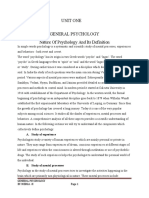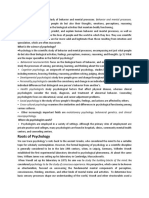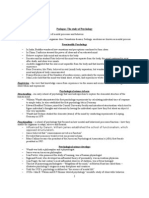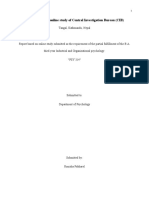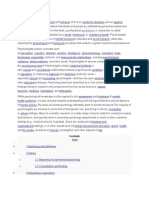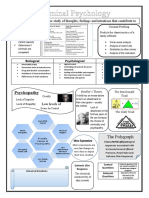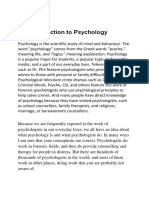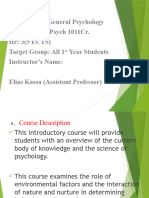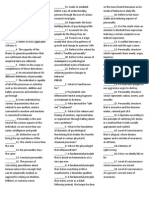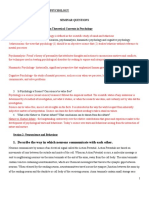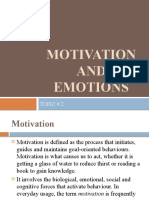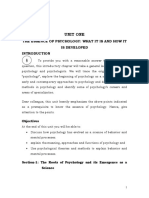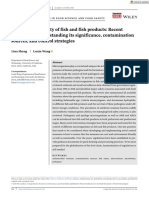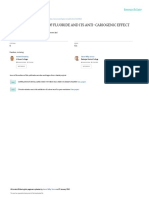0% found this document useful (0 votes)
1K views16 pagesPSYCHOLOGY Definition:: Unit-I: Fundamentals of Psychology
The document discusses the fundamentals of psychology including its definition, goals, and history. It provides details on the 4 main goals of psychology: 1) describe, 2) explain, 3) predict, and 4) change/control behavior. It then discusses the growth of psychology in the 19th century and some of the central issues and innovations that helped establish it as a science. Some of the founding theories and figures are also mentioned like Wundt, James, and Freud. Methods used in psychological research are explored like experiments, surveys, case studies and observations. The development of psychology in India is briefly outlined. Finally, 5 common research methods in psychology are defined including case studies, experiments, observational studies, surveys, and content
Uploaded by
Rani BiswasCopyright
© © All Rights Reserved
We take content rights seriously. If you suspect this is your content, claim it here.
Available Formats
Download as DOCX, PDF, TXT or read online on Scribd
0% found this document useful (0 votes)
1K views16 pagesPSYCHOLOGY Definition:: Unit-I: Fundamentals of Psychology
The document discusses the fundamentals of psychology including its definition, goals, and history. It provides details on the 4 main goals of psychology: 1) describe, 2) explain, 3) predict, and 4) change/control behavior. It then discusses the growth of psychology in the 19th century and some of the central issues and innovations that helped establish it as a science. Some of the founding theories and figures are also mentioned like Wundt, James, and Freud. Methods used in psychological research are explored like experiments, surveys, case studies and observations. The development of psychology in India is briefly outlined. Finally, 5 common research methods in psychology are defined including case studies, experiments, observational studies, surveys, and content
Uploaded by
Rani BiswasCopyright
© © All Rights Reserved
We take content rights seriously. If you suspect this is your content, claim it here.
Available Formats
Download as DOCX, PDF, TXT or read online on Scribd
/ 16

